Xiu Xiu, "Falling"
Those of us who were there for ’90s the first time around know better than to be enthusiastic about having to do them all over again as digital downloads, but if you who were too young to fully experience the Clintons and “Twin Peaks” and clear beverages during their original run I can only say “sorry,” “good luck,” and also, “Maybe this time let’s skip the nu metal thing.” Enjoy.
New York City, March 8, 2016

★★★ The cross street outside the school was full of traffic and bright haze and marijuana smoke. Again, a veil quickly covered the early sun. The warmth was going to arrive, and by afternoon some people had gone so far as to go out in t-shirts, which was overkill or wishfulness. People who calibrated their clothing decisions, meanwhile, had taken the effort to put on scarves. By sundown the light jacket and the bare ankles, worth trying in the morning, were both less than what was necessary.
Garden and Gut
by Matt Hartman
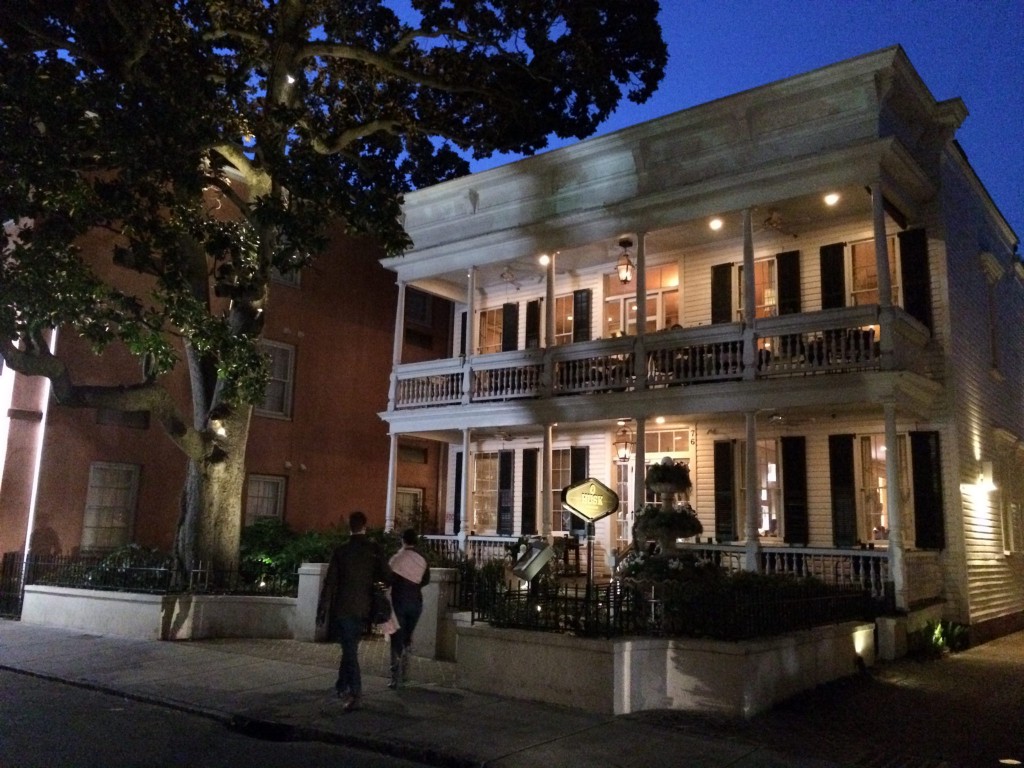
Bullock’s Barbecue has been open since 1952. Located in Durham, North Carolina, a block off of a commercial highway and across from a Coca-Cola bottling plant, you can still find the founder’s son, Tommy, passing to-go containers through the kitchen window every day, surrounded by photos of bygone movie stars and telling anyone who’ll listen about the time Lucille Ball ate his food. The restaurant’s wait staff seems to be almost entirely composed of middle-aged women, all of whom boast a drawl strong enough to seem like caricature, and a politeness genuine enough to assure you it’s not. Add in the fact that Bullock’s still serves a large sandwich for $4.95 and it starts to seem like Bullock’s is the “traditional barbecue joint” that John Reed, founder of the Campaign for Real Barbecue, described to the New Yorker as “a place in the South where people from all walks of life and all races, from the sheriffs’ deputies to the construction workers to the town bankers, gather to eat the local specialty at a price just about anybody can afford.”
But Bullock’s is not true barbecue, according to the Campaign for Real Barbecue. A Southern version of groups like the Associazione Vera Pizza Napoletana, the Campaign exists “to celebrate and to promote barbecue’s wood-cooking heritage, to identify and to honor those who stay true to the traditions of their place and provide the benchmark for Real Barbecue.” The group’s benchmark for “Real Barbecue” is not based on the sauce, nor even the kind of meat — arguments often overheard in Durham, near the dividing line between North Carolina’s two major styles, Lexington and eastern North Carolina style — but the method of cooking, which is the “one constant” for this most American of American foods. Real Barbecue must be “slow-cooked with smoke from wood or wood coals,” because that is the only way to maintain the “taste, tradition and a sense of place” that is “increasingly lacking in today’s world.” Bullock’s, which no longer cooks over a wood fire, doesn’t meet the criteria.
If you’re craving Real Barbecue, you can find it a few miles from Bullock’s at The Pit. Founded in 2007, The Pit is owned by Empire Eats, a restaurant group that also owns Lebanese and Italian-American operations. It “preserves the art of North Carolina barbecue” by creating an upscale dining experience complete with an artful array of meat cleavers pinned to a wall, a curated wine list, New York Times coverage, and — of course — a genuine commitment to cooking with wood. It all adds up to a sandwich that costs almost twice the one you can find at Bullock’s. “If this is what it takes to introduce barbecue to the next generation,” Reed told the New Yorker, “so be it. Things change. On the other hand, a wine list is wrong.”

“There was a South of slavery and secession — that South is dead. There is now a South of union and freedom — that South, thank God, is living, breathing, and growing every hour.” So said Atlanta Constitution editor Henry Grady in 1886, as he advocated for a South that, in the aftermath of the Civil War, rebuilt itself as an industrial center, thriving on manufacturing, wage labor, and railroads: the New South. Adapt Grady’s arguments to today’s post-industrial version of cultural capitalism and you get an economy based on selling Southern culture as a consumer good. But not just any culture: a version of the South that explicitly seeks to complicate the image of it as backwards and redneck and regressive and racist, replacing it with one of a thriving, diverse region that has birthed the most praiseworthy aspects of American vernacular. “The paradigm is shifting in the South,” writes Patterson Hood (frontman of famed Athens, Georgia, band the Drive-By Truckers) in a 2013 Bitter Southerner article titled “The New(er) South.” “Several of the midsized cities considered among the best places to live in the country are Southern. Louisville, Ky., boasts great art and food and a diverse music scene (anchored by My Morning Jacket, certainly one of the most vital bands of the last two decades). Birmingham, Ala., is in a bankrupt county and has more than its shares of issues, but it also boasts incredible restaurants and art and music and some beautiful old architecture.”
Add to that list literary stars like Wiley Cash and Jesmyn Ward, an emphasis on the role of blues and other folk traditions had on popular music, plus a fascination with Southern craftwork, and the contours of this New Southern culture takes shape. Media outlets like the Bitter Southerner and Garden & Gun even offer dedicated coverage to feed deepening interest, and a budding tourist economy is propped up by hip recommendations by tastemakers like the New York Times and Bon Appétit. But there’s a reason that when Beyoncé wanted to call out her (Black) Southern roots in “Formation,” she referenced portable hot sauce and the unique culinary traditions of this region. As Mikki Kendall writes at Eater, “she’s talking to the Southern and Great Migration Black Americans listening — to them, to us, it hearkens to home. To childhoods spent at fish frys, church picnics, and visiting relatives. It’s a reference to a cultural connection, one that spans the diaspora of Black American identity.” In fact, most definitions of Southern identity, Black or otherwise, tend to reference food in this way, because food is at the center of Southern culture. Hood even calls chefs the new rock stars.

Writing in Time in 2010, the late Josh Ozersky gleefully praises the high-end versions of New Southern cuisine that offer a commercial outlet for the traditions that Hood, Beyoncé, and others reference. Calling it, inexplicably, “lardcore,” Ozersky writes, “Typically, lardcore features unapologetically low-rent proteins like pork jowls and catfish, and treats them the way Paul Bocuse treated foie gras… Lardcore, at its best, is not trying to consciously class up the classics, but to reinvent them, quite literally, from the ground up. The movement bypasses the old high-low distinctions — soul food vs. gourmet food, home cooking vs. restaurant cooking, lard vs. oil and butter.” Marking the same progressive shifts Hood emphasizes, Ozerksy also claims that this New Southern cuisine is “the most purely democratic, un-status-conscious cooking to come along in a long time.”
Though perhaps Ozersky was more interested in how to find slightly cheaper high-end meals in New York City during the Great Recession than he was with a fair representation of Southern culture, his words strike a particularly sour note today. The economics simply have not borne out his assertion: This revival of Southern cuisine has been neither democratic nor any less status conscious than other, previous interest in Southern culture, like, say, the blues. More often than not, this new celebration of the South has focused on transforming culinary traditions into fine dining that can be sold to wealthy, mostly white tourists.
Hood cites Sean Brock as one bright spot in the South, as does Ozerksy, who calls him the “unacknowledged leader” of the New South food movement. Yet supper at Brock’s restaurant Husk starts at $30 — hardly a democratic price point. Brock is not alone either. Barbecue is being upscaled by places like The Pit. Elsewhere, hot chicken, once a staple of Nashville’s black community, turned into a trend that spread across first the city and now the country — even KFC is offering a take on the dish. While renewed interest offers a broad celebration for these once ignored pieces of American culture, they also remove them from their origins. As Rachel Martin details at the Bitter Southerner, the new hot chicken restaurants popping up across Nashville are mostly “run by young white men in popular gentrifying districts.” It’s not just that the price point is rising; it’s that turning these traditions into consumer goods often erases the communities that birthed them.
Seattle chef and native Southerner Edouardo Jordan put it even more starkly in a feature at Lucky Peach: “Name a black chef who’s won an award besides Marcus Samuelsson. It’s a celebrity show, culinary politics. I did a little research and I’m going through everything that I can possibly find, and there are maybe one or two minority chefs recognized by the James Beard Foundation a year, if that. It’s pretty fucking sad… Is that their problem or my problem? Or our problem?”
The diversity the New South claims to highlight disappears along with successful black chefs. Brock’s Husk claims to “explore the reality of Southern food” by “exploring an ingredient-driven cuisine that begins in the rediscovery of heirloom products,” and Husk’s website quotes Brock as saying, “If it doesn’t come from the South, it’s not coming through the door.” But a myopic focus on the crops and methods devoid of any broader economic connections blinds us to questions about who can dine at the restaurant, whose traditions are being expropriated, and who is enjoying the profits. If to be authentically Southern is to take part in this version of the South — the one represented in glamorous food magazines, not the diverse one found in the community’s kitchens; the one praised by the Economist for GDP growth, not the one with soaring poverty rates — then that South is a white aristocracy, which is anything but democratic.
Of course, that fact might also make it authentically Southern — just Southern in the very way that New South wants to renounce. Pointing to the grandeur enjoyed by the wealthy was long an excuse for the aristocratic ways of the Old South, and claiming authenticity on the grounds that your crops date back to slave times is a strange way of creating something new and progressive and forward-looking, just as blatantly appropriating Black culture is a strange way of creating something inclusive. On the other hand, given that Henry Grady’s version of the New South aimed to reform the economy while preserving white supremacy, perhaps these movements fit the bill.
It’s impossible to embody a democratic vision of the authentic South with consumption as the primary mode of expression. It undercuts even historical projects, like the event chef and educator Michael Twitty planned at Durham’s Historic Stagville, a site that was once one of the largest plantations in the South. As an article in Garden & Gun explained, “the meal would be prepared in the style and manner of the era, out of doors, as close as practicable to what the black folk of the time would have eaten. But more: The experience was meant to educate and excite and draw interest to the lives of the enslaved.” Yet, despite that goal, “Twitty readily admits the [actual] fare would have been much harsher. ‘If I gave you the authentic, real deal, some of that stuff is horrific. It would not pass muster. The original slave food? Oh no, honey.’”
The reality is that market-based consumption will alter the presentation of any tradition, and those traditions must adapt to those willing and able to support them commercially. To claim that the result of that process is authentic, as so many avid critics and patrons have, is to define Southern culture by market share; the result will always be a fiction, and possibly a harmful one at that, which is just as true for New South restaurants today as it was for the plantation-themed nightclubs lining New York in the nineteen-twenties.
At their best, these claims to authenticity can highlight the contributions of forgotten Southerners, especially non-white Southerners like Jordan and Twitty. That’s the most charitable way to take Ozersky’s claim that New South restaurants are democratic, and the goals of publications like the Bitter Southerner or organizations like the Southern Foodways Alliance, which hope to make clear the essential role African-Americans and African traditions played in shaping Southern culture, the melding of Southern and Latin American cultures, the long history of resistance movements indigenous to the South, the legacy of proud queer movements, and more.
But given the ways that the Campaign for Real Barbecue has ended up supporting some of the very restaurants threatening traditional barbecue joints, the ways that hot chicken is expropriated from Nashville’s black community, the way Twitty’s educational efforts are forced to assuage white patrons, and the way even leading New South organizations and publications too often fail to hire and support writers of color, it should be clear that the economics of cultural capitalism ensure that the New South looks a great deal like the Old South. As Twitty has argued, people of color are still, by and large, kept out of positions of power and acclaim within this movement. These restaurants, still, by and large, contribute to the uprooting of communities of color — even as they thrive on the interest in a more progressive South. Too often, the contemporary New South has adopted the traditions of these communities, transformed them into something only accessible to the affluent, and then claimed that their value stems from their role as a shared cultural inheritance. There’s something deeply contradictory about claiming authenticity on the basis of tradition while ignoring your dependence on the very things threatening those traditions, and the success of some doesn’t justify the ways in which the same processes erase others from their own cultures.

Minus a couple years in Chicago, I’ve lived my whole life in the South. But, given that I was raised by two white Yankees in the suburbs, my knowledge of Southern cuisine didn’t come from homemade grits, community fish frys, or Baptist revivals. It came from fast food. There was Chick-Fil-A before high school, Bojangles at college football tailgates, late-night trips to Cook-Out in college. But above all, though, there was Lizard’s Thicket. A local chain around my hometown of Columbia, South Carolina, that dates back to 1977, the Thicket serves vegetables with as much pork fat as plant matter and daily specials like fried chicken livers. It’s still the only place I know of where you can get a genuine meat-and-three plate in a drive-through, and it’s going strong, having opened its fifteenth location in 2013.
Yet restaurants like it are rarely included in the discussion of authentically Southern food. Proponents of the New South prefer the goods that fit in with trends toward the craft economy or the slow food movement, or that can easily attract tourists and national press attention. But perhaps places like Lizard’s Thicket, or restaurants like Bullock’s Barbecue, are just as authentically Southern as anything Sean Brock cultivates. What makes anything Southern is that it belongs to Southerners, that it exists in the practices of the people who call it home. The “authenticity” that leaves out huge swaths of the population, especially those who shaped the culture in the first place, is suspect.
Certainly the practices of old need support, commercial and otherwise, if they are to survive the homogenization wrought by capital. But cut off from all the Southerners who birthed them, nourished them, these practices become empty facsimiles. Dining at The Pit won’t tell you much about the South, whatever its methods, though it will tell you a great deal about capitalism, and even if Bullock’s doesn’t cook the way it did in 1952, it still maintains a central place in local Southern culture. if we’re serious about celebrating a progressive South, we must support the whole economy of practices that enabled our traditions in the first place. That means supporting the actual communities and the actual restaurants that have been here — that made this place a here in to begin with. Whitewashed and cut off from its roots, there may be plenty new about the New South, but it won’t be particularly Southern.
Photo of Husk by Nicki Dugan Pogue
Elia Perrone & Gigi Masin, "Garden Blues (Niro Love Mum Remix)"
You would have to be a real idiot to think that just because we’ve got a 70 degree day here in early March it means winter is over and we’ve made it through unscathed and it won’t be cold again for the next nine months and the rest of the year is going to be blue skies and gentle breezes and lazy afternoons. You’d have to be an even bigger idiot to say it, so I’m just going to be quiet and let you enjoy the sounds of Elia Perrone and Gigi Masin while I go dream of blue skies and gentle breezes and lazy afternoons, which, on a day like today, are almost impossible to stop thinking about.
Job Unoptimized
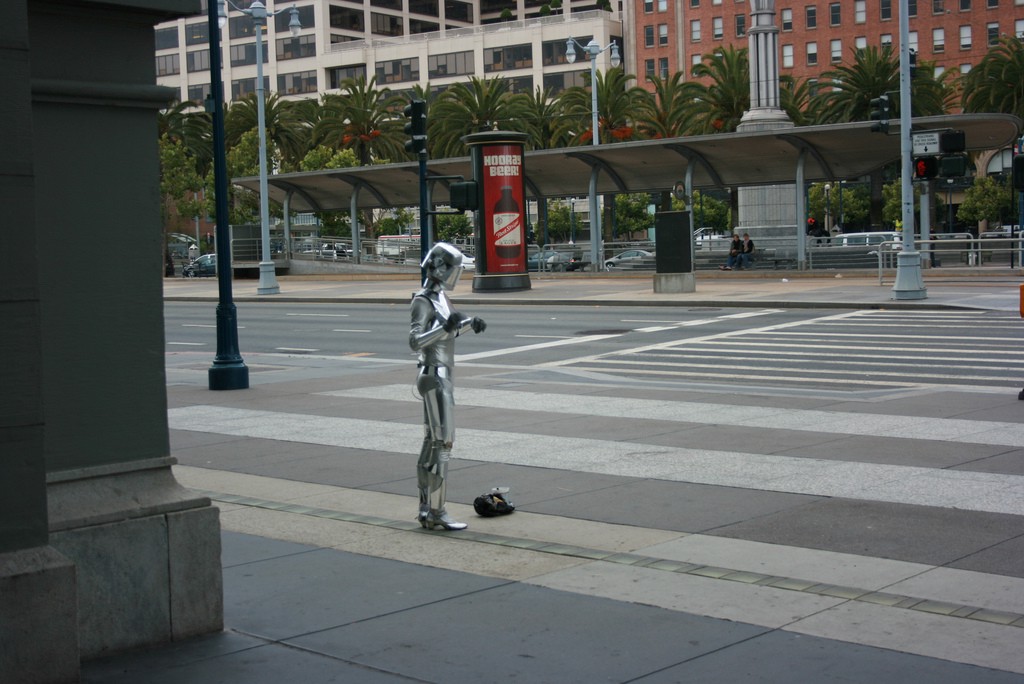
“I have a lot of friends who work in those companies, and they literally encourage me every week to quit my job and do what they’re doing,” said Helana Corda, who teaches sixth graders at a public middle school, is a part-time bartender and works at a program for disadvantaged children.
If Ms. Corda doesn’t want to code, maybe she could at least do something useful in the new San Francisco economy, like deliver burritos summoned by an app created by the people who do code? Their children aren’t going to public school, after all.
Photo by Swaminathan
New York City, March 7, 2016

★★★ The chill on the breeze was harmless. People had stepped outside in sweaters and sport coats. Construction grit still flew unimpeded by leaf or blossom. The light up high in the buildings was warm and getting warmer. The ice cream truck was out to tempt the children getting out of school. In the air was a shimmer that was either enchanted or grimy.
Counting to a Billion
by Alex Cuadros
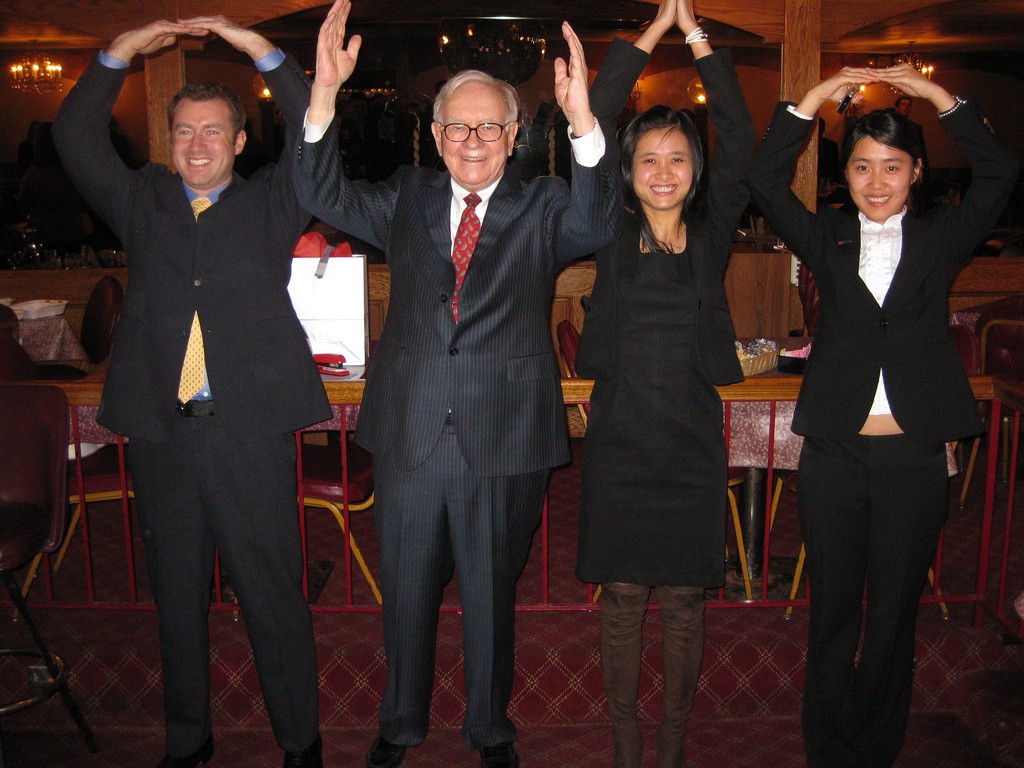
Last week, Forbes published its list of the richest people in the world. This list, in the suggestive words of Peter Bernstein and Annalyn Swan, is “the big-banana index — simple, primal, direct” — a purely objective measure of who has more money than whom. But it’s more than that too. In their book about the Forbes 400, which ranks the richest Americans, the two financial journalists go on to describe it as “a powerful argument — and sometimes a dream — about the social value of wealth.”
There are a few problems with this narrative. Like the numbers, which are a lot more subjective than Forbes lets on. I know this because I spent two years working on a similar list, the Bloomberg Billionaires Index, which was created by two Forbes alums, Matt Miller and Pete Newcomb.
Calculating someone’s net worth is a mix of reporting, math, intuition, and unwritten tradition, because very few are willing to turn over anything so precise as bank statements or tax returns. And without access to these, some information is simply unknowable. The easy part is tallying up shares in companies that trade on the stock market. It’s a matter of public record that Warren Buffett owns nearly three hundred and ten thousand shares of Class A Berkshire Hathaway shares, and that each of these shares trades for $205,000. Multiply the two numbers and you get $63 billion. Most of a typical billionaire’s net worth exists only on paper, but I also spoke to analysts who could put a value on assets in the physical world — like Ralph Lauren’s $250 million classic-car collection, or Steve Cohen’s art. The task of pegging someone’s holdings in cash and stocks and bonds is trickier; Bloomberg created a calculator to simulate the appreciation of an imaginary portfolio, and if we changed one allocation, the net worth could fluctuate by tens or hundreds of millions, if not billions, of dollars.
Some numbers even the billionaires themselves don’t know for sure. According to Forbes, Charles and David Koch are each worth exactly $39.6 billion. But most of their fortune comes from their ownership of companies that don’t trade on any exchange, so they lack any consensus market value. In these cases, we compared whatever metrics we could dig up — refinery capacity, fertilizer sales — to those of public companies that seemed similar. Even when we got hold of exact revenues and profits, though, changing one assumption could make the number vary wildly. This helps to explain why Bloomberg’s number for the Koch brothers — $48 billion each — is so far from Forbes’s.
Of course, the biggest difference between the two lists is that Forbes says Mike Bloomberg is the world’s eighth-richest person, worth $41.7 billion. On the Bloomberg Billionaires Index he isn’t listed at all, because Bloomberg News doesn’t cover its owner.

We always ran our numbers by the billionaires. Most didn’t mind warning us when we got something wrong. A spokesman for Amancio Ortega, the founder of Zara (net worth $67 billion), once told me our number looked a little too high. But some dispute their place on rich lists entirely. A Mexican chemicals tycoon named Antonio del Valle Ruiz, perhaps concerned about his safety, once told me he didn’t control the fortune that we were attributing to him. Others hope to avoid drawing attention to shady dealings. Others still, even the seemingly press-averse, actually want a larger number. When I relayed our initial estimate of around $10 billion for Joseph Safra, the secretive scion of an old Jewish banking dynasty from Syria, his people assured me that we were too low by several billion. They wouldn’t offer any proof, though, because they claimed that some of his assets couldn’t be revealed publicly.
More often, when someone wanted a higher number, he — always a he — would provide extensive evidence to make his case. Eike Batista, who used to be Brazil’s richest man, once sent me photos of his various yachts and private jets. Donald Trump is most famous for this, though he’s less successful than he’d like. He says he’s worth $10 billion; Forbes says he’s worth $4.5 billion; and Bloomberg says he’s worth $2.9 billion. He once sued a journalist who pegged him at a mere $250 million. The lawsuit was interesting because it revealed the squishiness of Trump’s own calculations, which attribute great value to his brand — his Trumpness. In a deposition, he said, “My net worth fluctuates, and it goes up and down with markets and with attitudes and with feelings — even my own feelings.”
Trump is sometimes ridiculed for this idea, but it’s not actually as crazy as it seems. His mood-calculation is a hundred percent arbitrary, but this is an error of degree, not of essence. It took me a while to realize that even the value of Warren Buffett’s Berkshire shares is not objective: If he tried to sell them all at once, their price on the exchange would plummet, and he wouldn’t end up with anywhere near $63 billion in his checking account. In a way, ranking billionaires is an enterprise like Trump’s own. His credibility — in business and politics — depends on the popular belief that he is successful. Similarly, rich lists are only as true as the perception of authority behind them.
Taking these numbers as truth is something of a leap of faith. Uber, for instance, has never turned a profit, its full financial details have never been disclosed, and it doesn’t trade on the public market. As with Snapchat and Pinterest and Airbnb, its alleged value is based almost entirely on what a handful of big investors were willing to pay for a stake. This, in turn, is based partly on some kind of business plan, partly on guesses about the future — and mostly on what competing venture capitalists are willing to pay, a calculation that often grows from little more than fear of missing out on the next big thing. That’s not science; it’s not art; it’s emotion. But Forbes and Bloomberg usually rank the founders of these so-called unicorns based on precisely such valuations.
Why does any of this matter, beyond the egos of a few Silicon Valley entrepreneurs? Perceptions have real-world effects. Donald Trump recently bragged that, back in his days of serial bankruptcy, he had successfully tricked Forbes into making him appear richer than he actually was. His pride was on the line, sure, but so was his business. “It was good for financing,” he said. Thanks to Forbes’s number, bankers lent him more money at lower rates than they would have otherwise. Similarly, friendly estimates for some of today’s unicorns can serve to promote the interests of their owners.

Forbes’s list of the world’s richest people grew from a separate list, the Forbes 400, that ranks only the richest Americans. Both were born in the nineteen-eighties, when Reagonomics unleashed the id of capitalism and newly minted billionaires showed off their wealth as perhaps never before. It was during this time that Tom Wolfe coined the term plutography, defining it as “the graphic depiction of the acts of the rich.” For publisher Malcolm Forbes, however, the list represented “a marvelous meritocracy of money,” as the journalists Bernstein and Swan put it. Though he had inherited the magazine from his father, Forbes saw the ranking as a celebration of enterprise over aristocratic privilege.
Even as the gap between rich and poor has grown, this narrative has only deepened. “The American dream is still very much alive,” editor Luisa Kroll wrote upon releasing the Forbes 400 a few years ago. As evidence, she pointed out that, in the eighties, more than half of the list’s members had inherited their fortunes, while now seventy percent are classified as self-made. This interpretation isn’t exclusive to Forbes. “It’s not just a list of privilege,” writes Drake Baer at Business Insider. “These rags-to-riches stories remind us that through determination, grit, and a bit of luck anyone can overcome their circumstances and achieve extraordinary success.” What Baer failed to note is that many of those said to be self-made benefited from sizeable inheritances, or that social mobility otherwise remains abysmal. These perceptions of merit and opportunity also have real-world effects, influencing public support for policies that redistribute income between rich and poor.
The message being promoted here is that the economy isn’t rigged after all. On releasing its latest list, Forbes claimed to have registered “huge upheaval” among global billionaires. “Volatile stock markets, cratering oil prices and a stronger dollar led to a dynamic reshuffling of wealth around the globe and a drop in ten-figure fortunes for the first time since 2009,” Kroll wrote. This conveys an image of capitalism functioning in its mythic form, with competition and creative destruction constantly shaking up world markets. Of the two hundred and twenty-one who fell off the ranking, though, we aren’t told how many simply slipped to $999 million or thereabouts.
Some of Forbes’s own numbers undermine the idea of meritocracy at work. “It’s never been so easy to get rich so young,” trumpets one story on the world’s sixty-six billionaires who are under forty years old. But thirty of them inherited their fortunes, and the other three dozen make up just 1.4 percent of the world’s more than eighteen hundred billionaires — hardly the picture of a new era of precocious young wealth creators. Other numbers are even more inconvenient for Forbes’s narrative. To much less fanfare, the magazine recently started a separate list tracking America’s richest families. Some of the highest ranked are very old money: the Du Ponts, the Hearsts, the Mellons, the Rockefellers. Yet Forbes doesn’t take this as a sign that American wealth is calcified; instead it’s a lesson in how to “preserve family wealth.” Likewise, even though just twelve billionaires in the entire world are black, I have yet to see a Forbes story on the existence of deep structural racism barring entrance to the ranks of the world’s richest people.
What these lists highlight, and what they leave out, hint at embedded persuasions about the value of wealth. Forbes and Bloomberg both allow you to filter billionaires by country, industry, and age, and tell you whether they made their own money or inherited it. But you can’t sort billionaires by the money they spend to influence the world through politics or philanthropy. When it comes to Bill Gates, his foundation’s $40 billion endowment isn’t counted as part of his fortune, even though he and his wife have near-total discretion over how that money is distributed. Whatever you think of his causes, that discretion represents great power — and means that in some sense, he’s even richer than the lists let on. The official measures of power take for granted the truth of Gates’s selflessness.
Beyond these calculations is a more fundamental issue: Ranking people solely by their financial value obscures a proper sense of their social value. By adopting the logic of a “big banana” contest, these lists help make someone like Donald Trump — beneficiary of an accident of birth and merely average returns on capital — inherently important. The same logic extends to the self-made. Is Bill Gates “worth” more than anyone else in the world because the company he built is history’s greatest contribution to the advancement of human progress? Or because he turned a mediocre operating system into a monopoly, systematically protected it from competition, and extracted economic rents for years? The notion that his philanthropy is selfless might lead you to the first conclusion.
The media should, of course, investigate where the wealth of our plutocrats comes from. Given the power they wield, it’s a matter of vital public interest, and it would be far worse to have no sense of their power at all. But these rankings aren’t neutral measures of influence; they’re sold in a way that confuses money with merit. There’s a reason Forbes unironically calls itself “The Capitalist Tool.”
Photo of Warren Buffett by Aaron Friedman
The Last Juke Joint
by David Wilson
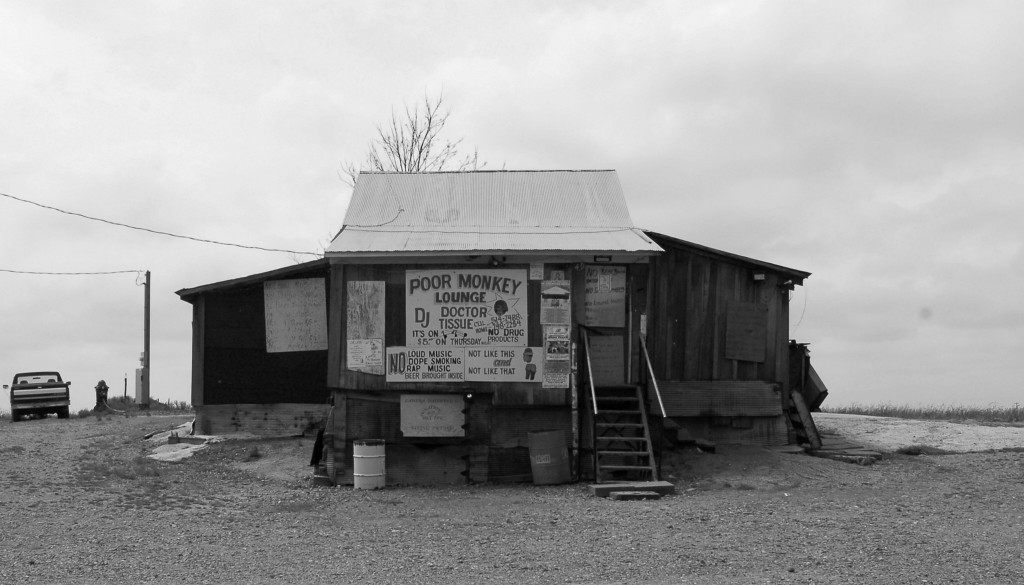
Po’ Monkey’s Lounge, an assemblage of old cypress planks and corrugated steel covered in hand-painted signs, sits on the edge of a cotton field outside of Merigold, Mississippi. Willie “Po’ Monkey” Seaberry, now in his mid-seventies, still farms the fields that surround it, and lives in a room in the back. He doesn’t own the fields, or the house, though on Thursday nights, when he opens its doors to the public for a $5 cover charge, it’s easy to think otherwise. On a suffocating July night, Seaberry, nearly six feet tall and solidly built, perched inside the door of his house. Dressed in suspenders, a magenta dress shirt, and a black tie, he greeted the guests who came to listen to blues and soul music — locals from Cleveland and Mound Bayou, and Teach-for-America workers, and teachers on a professional development trip — though he didn’t so much talk to his guests as nod approvingly while chewing on an unlit cigar.
Run by Seaberry since 1963, Po’ Monkey’s is one of the last of the Mississippi juke joints (derived from a Gullah word, “jook” or “joog,” meaning disorderly) that once peppered the cotton fields and plantations of the Delta region. These roadside barrelhouses offered rural blacks a place to drink, dance, hear live music, and gamble, at a time when they were forbidden from patronizing white establishments. Traditionally housed in shacks like Seaberry’s, juke joints flourished in the South before World War I, but the Great Migration began a process of significant decline. Seaberry is one of the last in a line of sharecroppers, and today much of the land in the Delta has been given over to agribusiness: Monsanto and Dupont signs mark the fields of corn and soybeans along Highway 61, while fast-food chains and Walmarts have pulled commerce away from downtowns and closer to the highways.
A few years ago, a Mississippi Blues Trail Marker — surrounded by a barbed-wire fence to ward off would-be thieves — was placed in front of Po’ Monkey’s Lounge. The Blues Trail, a state-sponsored attempt to drive tourism to the Delta, may be Mississippi’s last, best chance at revitalizing the area, one of the poorest in the country. In the early nineteen-nineties, casinos had been the great hope for renewal, especially in Tunica County, the northernmost part of the Delta. The casinos grossed hundreds of millions of dollars, but according to a Washington Post, despite the jobs they brought to the region, the revenue primarily benefited the white property owners — called “plantation owners” by County Administrator Michael Thompson — who leased their land to the casinos. Little of the windfall was used for career training or to recruit other industries to the area; poverty rates, while markedly improved, remained among the highest in the nation, and schools continued to be some of the lowest performing. Since the height of the casino boom, a number have shuttered, including the largest in Mississippi, Harrah’s, in 2014. Decades after the first casino arrived, Tunica offers “less opportunity than all but six other counties in the United States.”
In July of 2004, the state senate passed a bill establishing the Mississippi State Blues Commission. It was charged with developing “a plan to promote authentic Mississippi ‘blues’ music and ‘blues culture’ for purposes of economic development.” The commission created the Blues Trail, placing historical markers like the one at Po’ Monkey’s throughout the Delta, and began advertising the area’s blues heritage. Minimized in the commission’s campaign, which celebrates the “story of the people, places, themes and styles of blues music in Mississippi” is the very obvious point that, without slavery and its brutal legacy, there would be no Delta blues. In his book, Father of the Blues, composer and self-proclaimed “father of the blues” W.C. Handy describes them as:
the anthem of a race, bonding itself together with cries of shared self victimization. Bad luck and trouble are always present in the Blues, and always the result of others, pressing upon unfortunate and downtrodden poor souls, yearning to be free from life’s’ troubles. Relentless rhythms repeat the chants of sorrow, and the pity of a lost soul many times over.
The cultural appropriation of the Delta blues, which originated in black culture, by white performers like Eric Clapton and the Rolling Stones, is as much a story of the blues as Charley Patton on Dockery Plantation or Robert Johnson at the crossroads where he was said to have sold his soul for the ability to play guitar. It continues in a different form in the demography of current blues fans — even though that is precisely what makes them attractive to state planners of the Blues Trail. A 2007 study by polling firm the Kitchens Group found that the modern blues fan tends to be older (eighty percent are between the ages of forty-one and forty-six); white (ninety percent); well-educated (seventy-four percent attended college or held advanced degrees); and wealthy (twenty-five percent make more than $75,000 per year).
At Po’ Monkey’s, I met two men from Norway who were drinking forty-ounce Budweisers, discussing towns they had seen and enthusing about the “authentic.” Earlier that day, they had visited Dockery Plantation, the famous crossroads, and the Blues Trailer marker in Greenwood for Johnson’s gravestone. Next, they planned to head to Clarksdale, where Muddy Waters grew up and Bessie Smith died. The town’s most popular attraction, Ground Zero Blues Club, is less than fifteen years old, though the name connotes Clarksdale’s deep historical cred in the development of early blues. The shabby-chic look of the building, owned by Clarksdale mayor Bill Luckett, Memphis music executive Howard Stovall, and Morgan Freeman, suggests a hard-earned legacy, but the weathered white-washed bricks, mismatched chairs, and graffiti-covered walls bring to mind a Hard Rock Café or a blues-themed restaurant at an amusement park. When I visited recently, the house band relied on covers of Tracy Chapman and ZZ Top to win over the middle-aged, out-of-town, and largely white audience.
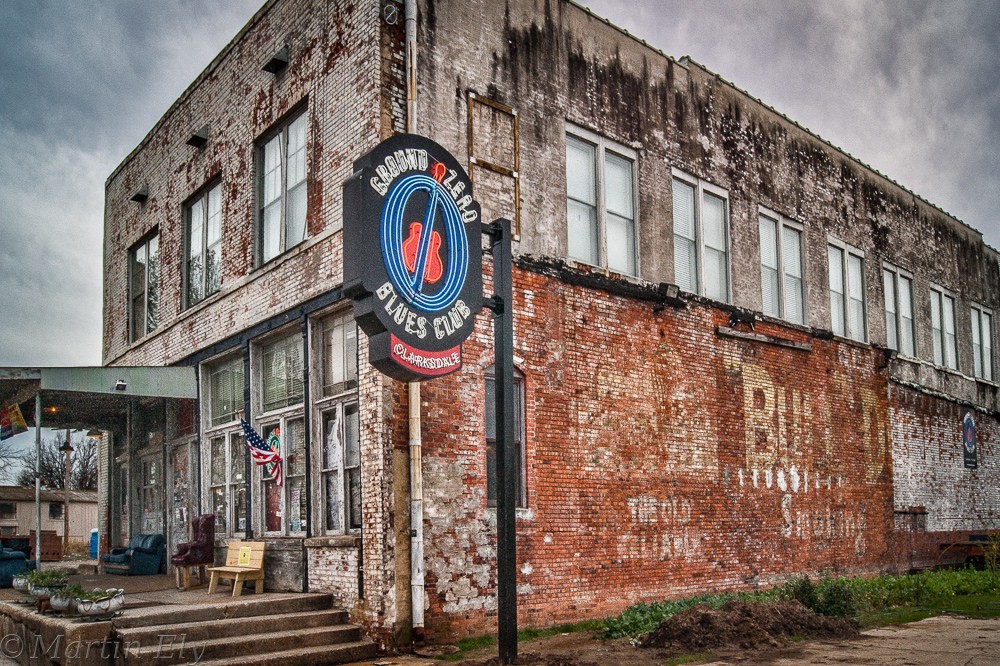
Beyond Ground Zero’s back parking lot and across the railroad tracks that used to separate the white from the black parts of town is Red’s Lounge, a juke joint owned and operated for the past forty years by Red Paden. The 2014 Blues Trail edition of the magazine Living Blues reports, “many visitors initially bypass Red’s, thinking that the rundown building in which it’s housed is abandoned, while its ramshackle furnishings and buckets to catch rainwater might come as a culture shock.” But once inside, visitors might recognize the interior from the back cover of the same issue of Living Blues, where an ad for Visit Mississippi, the official webpage for state tourism, features elder bluesman Bobby Rush hunched over his guitar, playing for a sparse, mostly white and entirely middle-aged crowd. When Paden’s friend, Big Jack Johnson, passed away in 2011, Red planned a tribute show in his honor — Red’s Lounge was the bar Johnson would play when he passed through Clarksdale — but a competing tribute had been scheduled at Ground Zero, forcing Red to cancel his. When I asked him recently about Ground Zero, his feelings were clear: “Man, fuck that Hollywood motherfucker.”
Muddy Waters famously said, “I wanted to get out of Mississippi in the worst way. Go back? What I want to go back for?” In the Delta Blues Museum, though, a grown Waters sits, grinning happily inside of a perfect recreation of the very poverty he escaped. Across the street from Ground Zero, in an old Yazoo and Mississippi Valley Railroad Depot, the log cabin that Muddy Waters lived in on Stovall Plantation has been preserved and reassembled, and inside sits a cartoonish sculpture of him dressed in a white suit and fedora, with a gold-top Gibson Les Paul on his lap. Once Seaberry is gone, so too will end the era of the rural juke joint. It’s easy to imagine Po’ Monkey’s — now the most photographed building in the Delta and one of the most popular tourist destinations — painstakingly taken down and reassembled in a museum someday. Perhaps a statue of a smiling Willie will be placed inside, presiding Gatsby-like over an imaginary party, the poverty and oppression that largely governed his life sanitized for a museum audience.
For now, though, the party continues at Po’ Monkey’s, Red’s, and handful of other places throughout the Delta, where tourism is their only economic hope. Little has changed in the decade since the Mississippi Blues Commission was founded. Christopher Masingill, joint head of the Delta Regional Authority, summed up the current situation by saying, “you can’t out-poor the Delta.” During my last visit to Po’ Monkey’s, Darrell Moore, grandson of civil rights leader Amzie Moore, sold tamales out of the back of his truck, which was parked next to the Monkey’s Blues Trail Marker. “Trying to make a couple of bucks,” he said as he applied another layer of insect repellent to his arms and legs.
This piece originally stated that Teach for America employees were volunteers — they’re not — and that Po’ Monkey’s was in Sunflower County; it is Bolivar County. It also misstated the extent of casino closures in Tunica and the impact of those closures on the region. We regret the errors.
Photos by Visit Mississippi and Martin Ely, respectively
Hovvdy, "Problem"
If this sound of this song makes you feel old it means you probably are. Sorry/enjoy.
Aberdeen, Maryland, to New York City, March 6, 2016

★★★ Clear light came in around the shades, but not for long before clouds cut it off. The landscape was maximally colorless, dried and faded by the full length of winter. One yellow crocus poked out of the bank above the driveway, keeping its brightness to itself, while pale snowdrops filled the rest of the slope. A hawk, spotty and juvenile in its plumage, chased a chickadee fruitlessly around and around the holly that was the only green thing standing. The scenery by the Susquehanna lay under a miasma, some sort of gray fog or haze, as if the dullness were leaching out of the scenery into the air. The huge stainless steel Virgin Mary on the west bank of the Delaware had lost all its usual shine till it looked like coarse white-and-black marble. Just over the bridge, though, the sun suddenly came through. Clouds got smaller and sparser, against wider and wider expanse of blue. Deep warm tones wakened in the rust brown of highway overpasses and sign poles. The reflective strips on the rest stop sign threw back rainbows. Manhattan was attended by only tiny clouds, like blimps. Sun poured into the glass buildings on the West Side and glimmered down in among the ramps and underpasses, where the tunnel emptied into the city.
